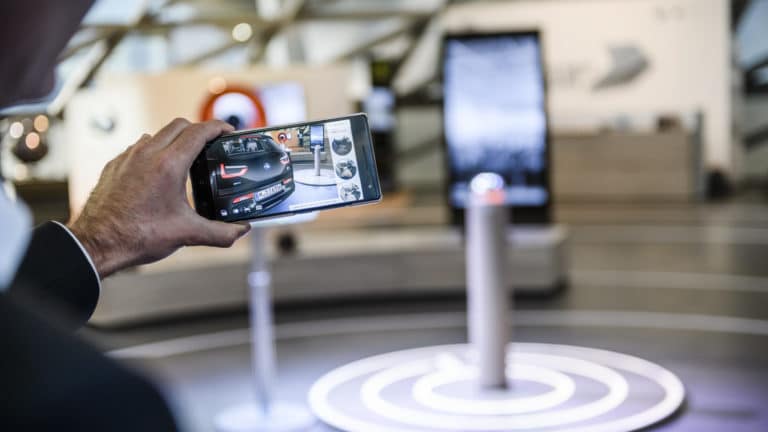
This article originally appeared in Street Fight, written by this post’s author.
As I’ve written and others have forecasted, virtual reality (VR) will come first but augmented reality (AR) will be bigger. That statement especially applies to location based applications. AR will be all about local.
Graphical overlays to the physical world will amplify everything from retail shopping (store navigation and product info), to finding a restaurant (ratings & reviews) to buying a home (values & specs).
AR’s market size stems from these practical and commerce-oriented use cases compared to VR. VR’s immersion is great for lots of things including gaming and entertainment; but not shopping, driving or assembling jets.
To be fair, VR will have some great e-commerce applications, such as seeing and ordering consumer products and virtual goods. But AR will be more applicable to where consumer spending really scales: the physical world.
That comes down to hardware realities. AR’s graphical overlays enable a field of view to walk, drive or stumble through the real world. AR hardware will also be (slightly) more fashion-friendly than VR.
AR wins for addressable media time too. It can theoretically be used during all waking hours, whereas VR will be confined to the hours when full immersion is practical or desired (enter VR porn addiction).
Then why is AR farther off? It’s because it’s a lot harder. The version of AR we mostly know, Google Glass, is more of a passive heads-up display. True VR involves graphics that interact with real objects in dimensionally accurate ways.
For example, being able to build a scaled up Minecraft board that fits perfectly on your coffee table. This involves lots of advanced optics, computer vision, and physics engines. It’s the stuff of Magic Leap, Microsoft HoloLens and Meta.
All three (especially MSFT) are grinding PR gears to make sure the world sees them as “mixed reality” (MR) instead of AR. This is to differentiate the technology… and to distance themselves from the AR stain left by Google Glass.
But it doesn’t matter what we call it, despite the ire of purists and terminology police who troll comment threads throughout the blogosphere, unknowingly eating from the hands of Microsoft’s marketing department.
In fact, the winners of VR/AR/MR and the rest of the alphabet soup will get there by means other than jargon. It will be the technology and its mainstream applicability that stand first and determine commercial success, not acronyms.
Look at Pokémon Go. Though it’s not true AR, the game has introduced the world to AR and accelerated its adoption curve… without saying “AR.” Most of the game’s 25 million users don’t care what it’s called.
Another example is Snapchat’s 3D stickers that overlay things like cat faces to video snaps. It isn’t really AR, but that doesn’t matter: It’s a graphical overlay that’s fun and easy to use, making it an effective gateway drug to AR.
What matters is that Pokemon Go, Snapchat and other arguably frivolous renditions of AR, do the technology a favor. By acclimating the world to a new graphical interface, it conditions a receptive user base for AR’s eventual arrival.
Benefiting from the path blazed by Pikachu and cat faces will be the AR apps mentioned above, as well as socially valuable apps still to come. We’re talking AR for emergency first responders, Amber alerts and medical research.
It’s this broad applicability and practicality — including local media and commerce — that make AR a $90 billion projected market opportunity. Naturally, everyone chasing that market wants to plant their flag and name it.
Just remember that the acronyms and classifications won’t matter much beyond reference points. It should simply be known as life and business-altering tech. Utility will lead; marketing departments and jargon police can follow.
For a deeper dive on AR & VR insights, see ARtillry’s new intelligence subscription, and sign up for the free ARtillry Weekly newsletter.
Disclosure: ARtillry has no financial stake in the companies mentioned in this post, nor received payment for its production. Disclosure and ethics policy can be seen here.
Header image credit: BMW
